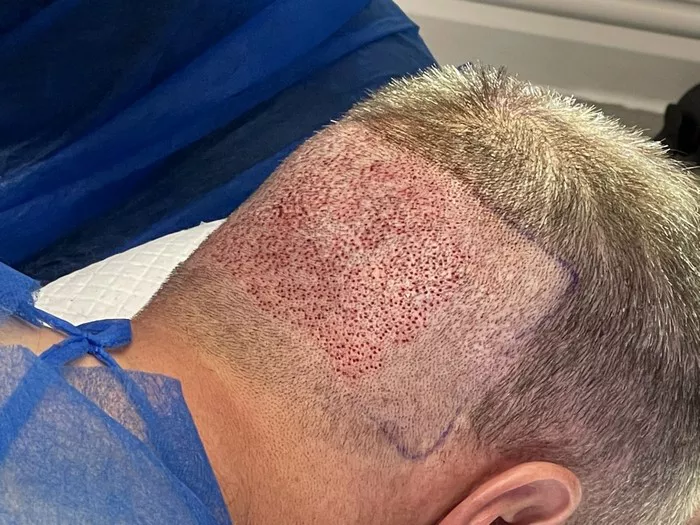Hair loss can be a distressing experience, and for many individuals, hair transplant surgery is a viable solution to regain their confidence and youthful appearance. However, choosing the right hair transplant method is a crucial decision. Two common techniques, Follicular Unit Extraction (FUE) and Follicular Unit Transplantation (FUT), offer effective solutions, each with its own set of advantages and considerations. In this article, we’ll explore the key differences between FUE and FUT to help you make an informed decision about which method is right for you.
I. Follicular Unit Extraction (FUE)
FUE is a minimally invasive hair transplant method that has gained popularity in recent years. This technique involves the individual extraction of hair follicles from the donor area, typically the back or sides of the scalp, using a specialized micro-punch tool. The harvested grafts are then transplanted into the recipient area, where hair loss is more pronounced. FUE offers several benefits:
Minimal Scarring: FUE leaves tiny, almost invisible scars at the donor site, making it a preferred choice for those who want to wear their hair short.
Quick Recovery: Patients who undergo FUE typically experience a faster recovery and can return to their regular activities within a few days.
No Linear Scar: Unlike FUT, FUE does not leave a linear scar, which can be a significant aesthetic advantage.
However, it’s essential to note that FUE may be less suitable for individuals with extensive hair loss or those who require a large number of grafts, as it can be more time-consuming and costly.
II. Follicular Unit Transplantation (FUT)
FUT, also known as the “strip” method, is a traditional hair transplant technique. During FUT, a strip of skin containing hair follicles is surgically removed from the donor area. The strip is then dissected into individual grafts, which are transplanted into the recipient area. FUT has its own set of advantages:
High Graft Yield: FUT allows for the extraction of a large number of grafts in a single session, making it suitable for individuals with advanced hair loss.
Cost-Efficient: FUT can be more cost-effective than FUE, especially when a large number of grafts are needed.
Proven Results: FUT has a long history of successful results and is a well-established hair transplant technique.
However, FUT does leave a linear scar at the donor site, which may be visible when wearing very short hairstyles. The recovery period is also slightly longer compared to FUE.
III. How to Choose Between FUE and FUT?
The choice between FUE and FUT depends on several factors:
Hair Loss Severity: If you have significant hair loss or need a large number of grafts, FUT may be more efficient. FUE is better suited for those with mild to moderate hair loss.
Scarring Concerns: If you prefer to wear your hair very short and are concerned about scarring, FUE may be a better choice due to its minimal scarring.
Budget: Consider your budget and the cost of each method, as FUT can be more cost-effective in some cases.
Recovery Time: If you need a quicker recovery and can tolerate a bit of scarring, FUE may be more suitable.
Consultation: Consult with a qualified hair transplant surgeon who can assess your specific condition and recommend the best method for your needs.
IV. Frequently Asked Questions (FAQs)
1. Is hair transplant surgery painful?
Local anesthesia is used during hair transplant procedures, so patients typically experience minimal discomfort during the surgery. Pain and discomfort are usually mild and can be managed with prescribed medications.
2. How long does it take to see results after a hair transplant?
Hair transplant results are not immediate. Typically, the transplanted hair falls out within a few weeks, and new hair starts to grow in around three to six months. Full results may take up to a year.
3. Are hair transplant results permanent?
Yes, hair transplant results are considered permanent. The transplanted hair should continue to grow for the rest of your life.
4. Can anyone undergo a hair transplant?
Not everyone is a suitable candidate for hair transplant surgery. Consult with a qualified surgeon to determine if you are a candidate based on factors like the extent of your hair loss and your overall health.
5. Are there any risks or complications associated with hair transplant surgery?
Like any surgical procedure, there are potential risks and complications, including infection, scarring, and unsatisfactory results. However, these risks are minimized when the procedure is performed by an experienced surgeon.
6. How much does a hair transplant cost?
The cost of a hair transplant can vary widely depending on the method used, the number of grafts required, and the geographic location of the clinic. It’s best to get a personalized cost estimate during a consultation.
In conclusion, choosing between FUE and FUT for your hair transplant is a decision that should be based on your individual needs, preferences, and the advice of a qualified hair transplant surgeon. Both methods have their advantages, and the right choice will depend on your specific situation and goals for hair restoration. Consulting with a knowledgeable medical professional is the first step toward achieving the hair restoration results you desire.

